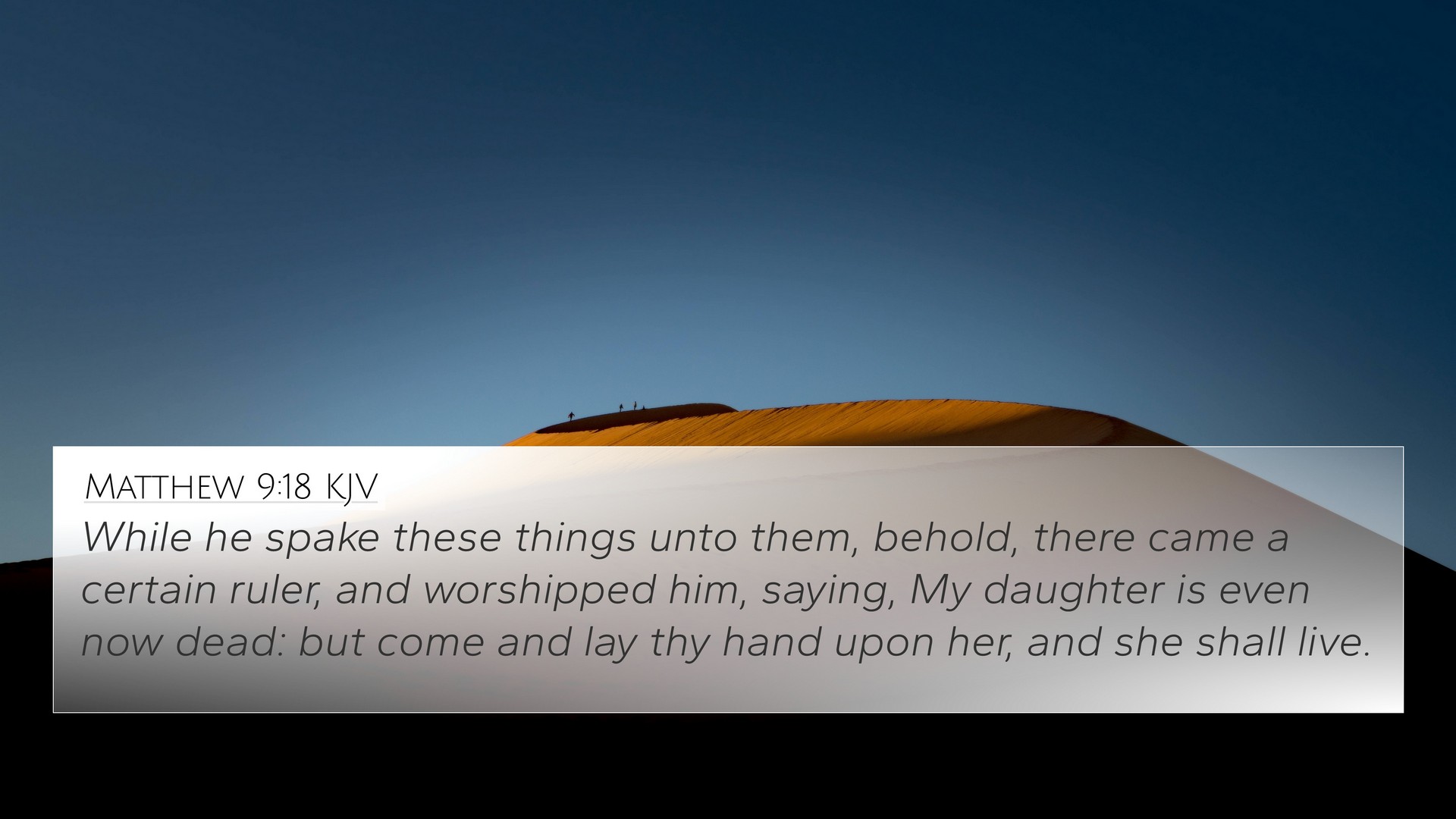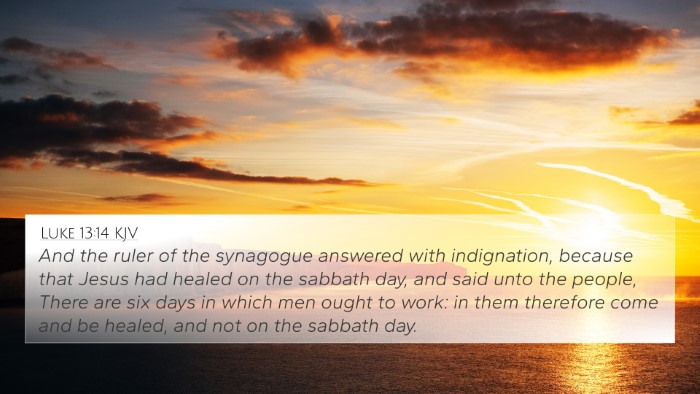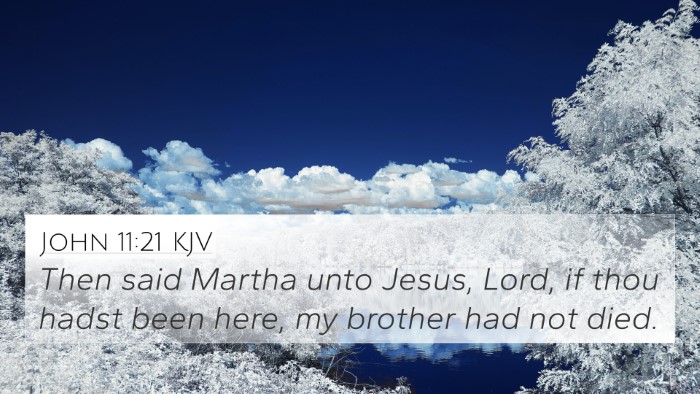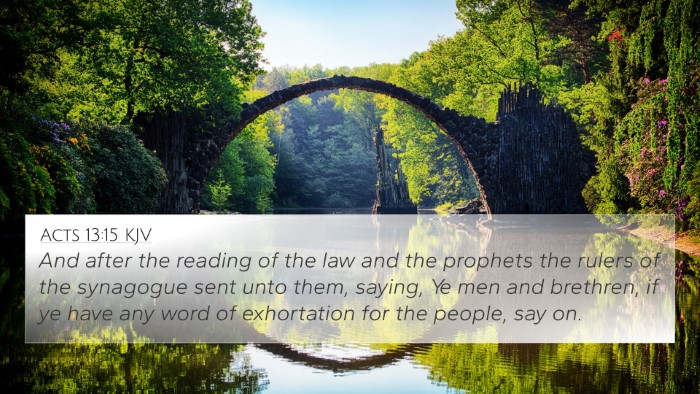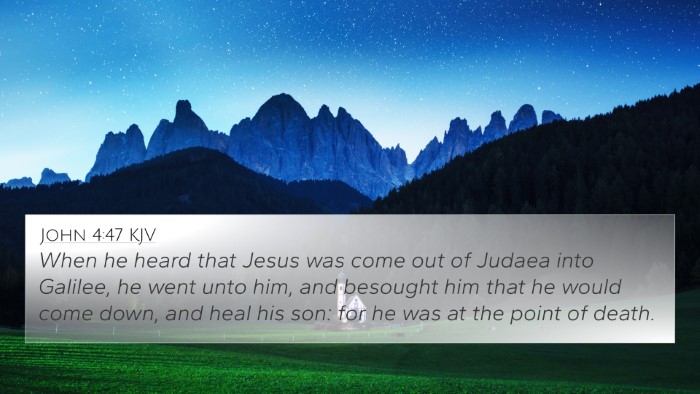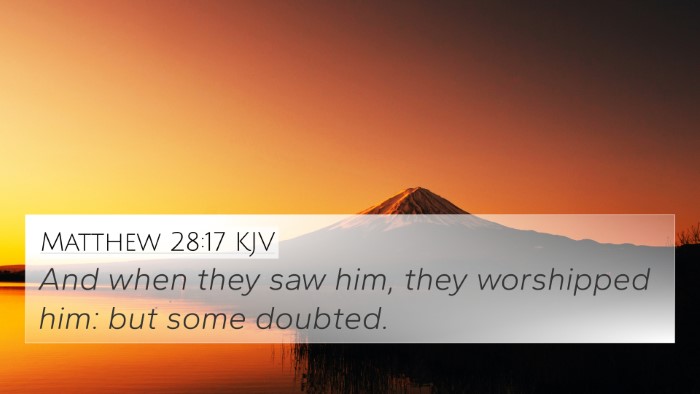Understanding Matthew 9:18: A Comprehensive Analysis
Bible Verse: Matthew 9:18
Matthew 9:18 states, "While he spake these things unto them, behold, there came a certain ruler and worshipped him, saying, My daughter is even now dead: but come and lay thy hand upon her, and she shall live." This verse illustrates a profound moment of faith and desperation. To explore its meanings and implications, we can refer to insights from various public domain commentaries.
Verse Context and Interpretation
In this scene, a ruler approaches Jesus, indicating his authority and the desperate state of his personal life due to the death of his daughter. The ruler's act of worshipping Jesus and his request for intervention highlight his faith in Jesus' healing powers. This situation can be seen as emblematic of the larger theme of faith and healing found throughout the Gospels.
Insights from Commentaries
Matthew Henry: Henry emphasizes the ruler's sincere faith. He notes that the ruler did not let the death of his daughter deter him from seeking Jesus. This act illustrates that faith can persist even in the face of despair. Henry also points out the significant role of the ruler in society, making his humble approach to Jesus even more impactful.
Albert Barnes: Barnes expounds on the nature of the ruler's belief in Jesus’ ability to heal. He identifies the contrast between the ruler’s despair and his unwavering faith. Barnes suggests that the ruler’s call for Jesus to "come and lay thy hand" signifies a personal touch and the intimate nature of healing in the ministry of Christ.
Adam Clarke: Clarke delves into the cultural context of the ruler’s actions, noting that leaders often had challenges in their dignity when approaching a healer like Jesus. However, Clarke highlights that this man exhibited humility, emphasizing that recognizing Jesus’ authority over life and death is paramount. His observations also reveal that true faith recognizes Jesus’ power, regardless of the circumstances.
Connections to Other Bible Verses
This verse can be related to several other scripture passages, enhancing its understanding through comparative analysis:
- Mark 5:22-24: In this parallel account, the narrative of the ruler and the request for healing reflects similar themes of faith and urgency.
- Luke 8:41-42: Another synoptic account captures the same story, showing the shared recognition of Jesus’ authority among the Gospel writers.
- Matthew 8:5-10: The faith of a centurion provides a contrast, emphasizing that faith can exist across different social hierarchies.
- James 5:14-15: This verse speaks to the practice of prayer and anointing for healing, echoing the themes found in Matthew 9:18.
- John 11:25-26: Jesus’ declaration about being the resurrection and the life resonates with the themes of life and death highlighted in the ruler’s appeal.
- 2 Kings 4:32-37: The story of Elisha raising the Shunammite's son parallels the themes of miraculous healing in desperate situations.
- Acts 3:6: Peter, through faith, heals a lame man, showcasing the continued ministry of healing post-ascension, akin to Jesus' work.
Themes and Takeaways
Thematic connections can be drawn from Matthew 9:18 that reveal deeper insights into faith and healing:
- Faith in Adversity: The ruler’s faith amid his daughter’s death exemplifies how believers can maintain hope in desperate times.
- The Power of Christ: The request for physical contact highlights the tangible nature of Christ’s healing power.
- Corporate and Individual Faith: The intersection of personal needs and the community's faith is a recurring theme in the Gospels.
Cross-Referencing Bible Verses
This verse not only stands alone but also finds profound connections with others throughout the Bible:
- Matthew 17:20: Understanding of faith as small as a mustard seed reaffirms the foundation of belief in God's power.
- Hebrews 11:1: Faith as the evidence of things not seen correlates with the ruler’s belief in a miracle.
- Romans 10:17: “Faith comes by hearing” implies the teachings of Jesus can inspire faith, as evidenced by the ruler’s actions.
- Psalm 107:20: “He sent his word and healed them” showcases the potency of God’s word in providing healing.
Conclusion
As we reflect on Matthew 9:18, we uncover the intricate layers of faith, desperation, and divine intervention. Cross-referencing this verse with others enhances our understanding, offering a richer perspective on how these themes are woven throughout the Scriptures. The role of inter-Biblical dialogue is essential for exploring the profound connections between different passages, as seen in our analysis.
By utilizing tools for Bible cross-referencing and applying a systematic approach to study, believers can deepen their understanding of scripture, creating a more comprehensive faith experience.
